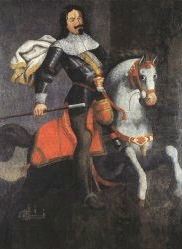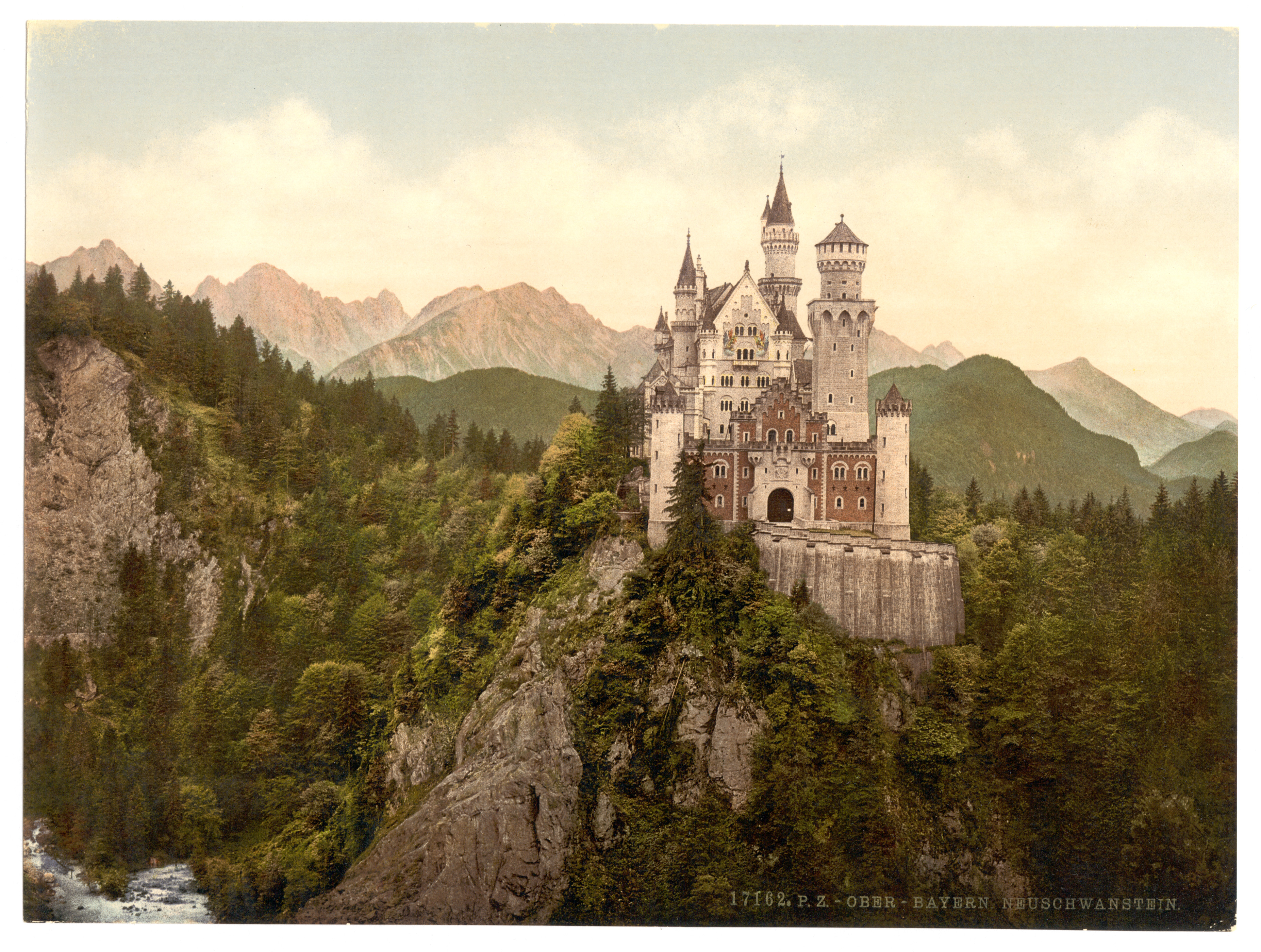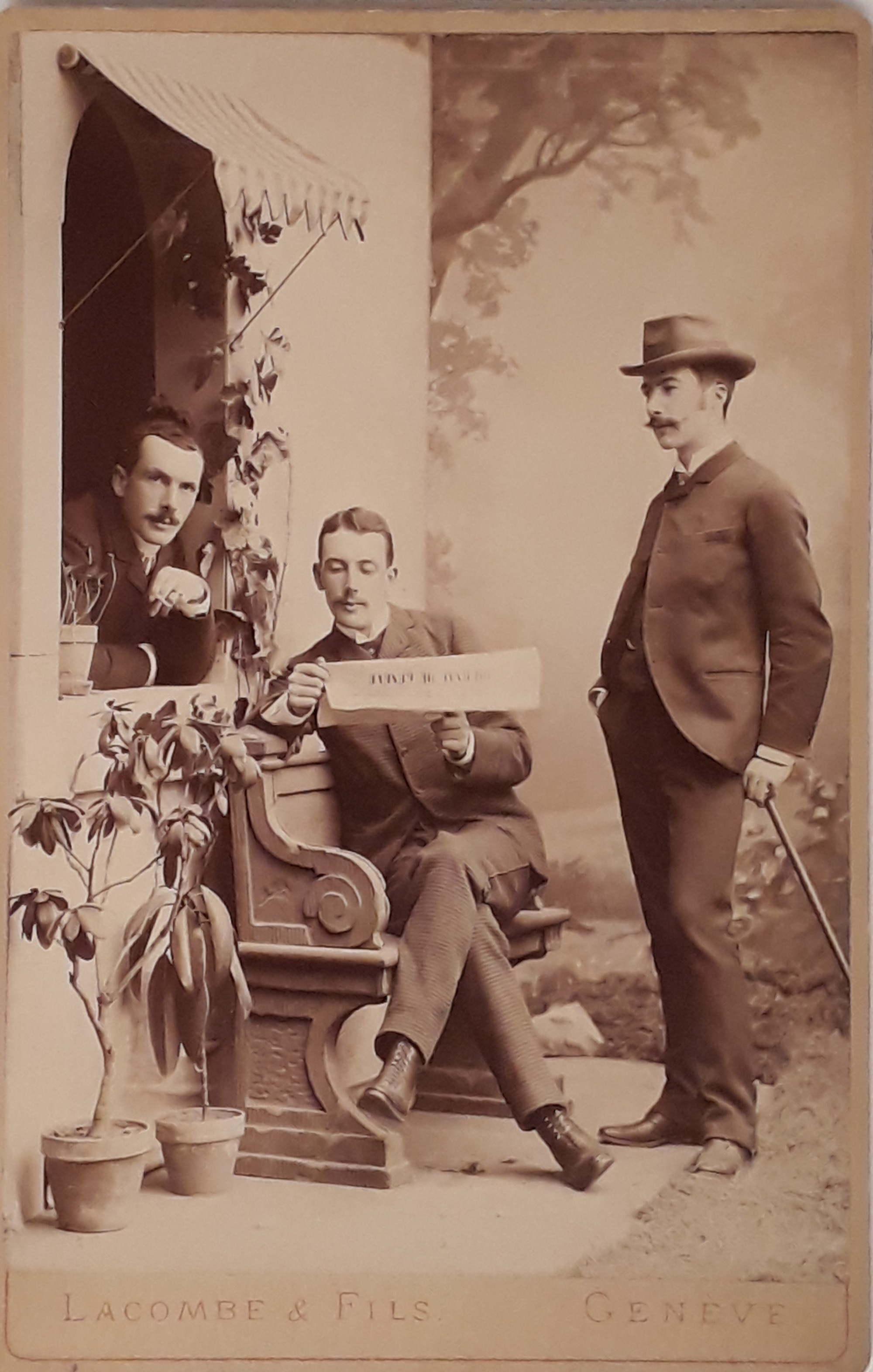|
Stockalper Castle
The Stockalper Palace (German: ''Stockalperpalast'') is a castle in Brig-Glis, Switzerland. It was built between 1658 and 1678 by Kaspar Stockalper, a silk merchant of Brig. The Stockalper Palace was the largest private construction in Switzerland at the time. It is a Swiss heritage site of national significance. History The first building on the site is known as the Stockalper House, which was built in 1532 by Peter Stockalper. Over the following century it was expanded toward the north, but it remained generally unchanged until the rise of Kaspar Stockalper. Kaspar Stockalper was born to a wealthy family in Brig on 14 July 1609. After studying at the university in Freiburg im Breisgau from 1627 to 1629, he returned to Brig and began building an extensive trading empire. By 1647 he had the local salt monopoly and built a road over the Simplon pass which gave him a monopoly on trade over this pass. Between 1651 and 1659 he built a canal from Vouvry to Collombey which expande ... [...More Info...] [...Related Items...] OR: [Wikipedia] [Google] [Baidu] |
Brig-Glis
Brig, officially Brig-Glis (french: Brigue-Glis; it, Briga-Glis), is a List of towns in Switzerland, historic town and Municipalities of Switzerland, municipality in the district of Brig (district), Brig in the canton of Valais in Switzerland. The current municipality was formed in 1972 through the merger of Brig (city), Brigerbad and Glis.Amtliches Gemeindeverzeichnis der Schweiz published by the Swiss Federal Statistical Office accessed 19 July 2011 Together with other Alpine towns, Brig-Glis engages in the Alpine Town of the Year Association for the implementation of the Alpine Convention to achieve sustainable development in the Alpine Arc. Brig-Glis was awarded Alpine Town of the Year 2008. The official language of Brig is (the Swiss variety of Standard ... [...More Info...] [...Related Items...] OR: [Wikipedia] [Google] [Baidu] |
Sierre
Sierre (; german: Siders, ; frp, Siérro, ) is the capital municipality of the district of Sierre, located in the canton of Valais, Switzerland. It has a population of 16,332. Sierre is nicknamed City of the Sun (french: Cité du Soleil) for its average of 300 days of sunshine a year. It is the last official French-speaking city in Valais before the French–German language border of the canton located at the forêt de Finges, a few kilometres after the town. A German-speaking minority lives in Sierre, counting for around 8% of the population. History Sierre was first mentioned around 800 as ''Sidrium'', though a 12th-century document refers to the village being founded in 515. In 1179 it was mentioned as ''Sirro'' and in 1393 as ''Syder''. Prehistory The area around the modern town, especially Gerunden hill, was settled very early. Archeological sites on the Gerunden hill have produced neolithic objects and grave goods (including a polished stone ax), Bronze Age weapons ... [...More Info...] [...Related Items...] OR: [Wikipedia] [Google] [Baidu] |
Photochrom
Photochrom, Fotochrom, Photochrome or the Aäc process is a process for producing colorized images from a single black-and-white photographic negative via the direct photographic transfer of the negative onto lithographic printing plates. The process is a photographic variant of chromolithography (color lithography). Because no color information was preserved in the photographic process, the photographer would make detailed notes on the colors within the scene and use the notes to hand paint the negative before transferring the image through colored gels onto the printing plates. History The process was invented in the 1880s by Hans Jakob Schmid (1856–1924), an employee of the Swiss company Orell Gessner Füssli—a printing firm whose history began in the 16th century. Füssli founded the stock company Photochrom Zürich (later Photoglob Zürich AG) as the business vehicle for the commercial exploitation of the process and both Füssli and Photoglob continue to exist today. ... [...More Info...] [...Related Items...] OR: [Wikipedia] [Google] [Baidu] |
Max Van Berchem
Edmond Maximilien Berthout van Berchem (16 March 1863, Geneva – 7 March 1921, Vaumarcus) commonly known as Max van Berchem, was a Swiss Philology, philologist, epigraphist and historian. Best known as the founder of Arabic epigraphy in the Western world, he was the mastermind of the ''Corpus Inscriptionum Arabicarum'', an international collaboration among eminent scholars to collect and publish Arabic inscriptions from the Middle East. Life Family background Berchem originated from a dynasty of Flemish people, Flemish Aristocracy, aristocrats in the former Duchy of Brabant whose roots are traced back to the 11th century. The only branch which survived until today is the one that converted to Protestantism in Switzerland, Protestantism and emigrated with the Anabaptist leader David Joris to Basel in 1544. After changing their locations a number of times, those van Berchems settled in what is now Romandy, the French language, French-speaking Western part of Switzerland, ... [...More Info...] [...Related Items...] OR: [Wikipedia] [Google] [Baidu] |
Balthazar (Magus)
Saint Balthazar; also called Balthasar, Balthassar, and Bithisarea, was according to Western Christian tradition one of the biblical Magi along with Caspar and Melchior who visited the infant Jesus after he was born. Balthazar is traditionally referred to as the King of Macedonia and gave the gift of myrrh to Jesus. In the Roman Catholic Church, he is regarded as a saint (as are the other two Magi). Tradition The Gospel of Matthew does not give the names of the Magi (or even how many there were), but their traditional names are ascribed to a Greek manuscript from 500 AD translated into Latin and commonly accepted as the source of the names. In this original manuscript, Balthazar is called Bithisarea, which later developed into Balthazar in Western Christianity. Balthazar was described in the 8th century by Saint Bede as being " fblack complexion, with heavy beard" with the "myrrh he held in his hands prefigured the death of the Son of man". As part of the Magi, Balthazar f ... [...More Info...] [...Related Items...] OR: [Wikipedia] [Google] [Baidu] |
Melchior (Magi)
Saint Melchior, or Melichior, was purportedly one of the Biblical Magi along with Caspar and Balthazar who visited the infant Jesus after he was born. Melchior was often referred to as the oldest member of the Magi. He was traditionally called the King of Persia and brought the gift of gold to Jesus. In the Western Christian church, he is regarded as a saint (as are the other two Magi). Tradition The Gospels in the New Testament do not give the names of the Magi (or even their number), but their traditional names are ascribed to a Greek manuscript from 500 AD translated into Latin and commonly accepted as the source of the names. Melchior was described by St Bede in the 8th century as being "an old man, with white hair and long beard." Melchior is also commonly referred to as the King of Persia. Following the Star of Bethlehem, the Magi first travelled to the palace of Herod the Great, who then asked for the Magi to find the Child Jesus and report back to him. Upon arriving ... [...More Info...] [...Related Items...] OR: [Wikipedia] [Google] [Baidu] |
Saint Caspar
Saint Caspar (otherwise known as Casper, Gaspar, Kaspar, and other variations) was one of the 'Three Kings', along with Melchior and Balthazar, representing the wise men or ' Biblical Magi' mentioned in the Bible in the Gospel of Matthew, verses 2:1-9. Although the Bible does not specify who or what the Magi were, since the seventh century, the Magi have been identified in Western Christianity as Caspar, Melchior and Balthasar. Caspar and the other two are considered saints by the Catholic Church. Name origin The name '' Caspar'' or ''Casper'' is derived from "Gaspar" which in turn is from an ancient Chaldean word, "Gizbar", which according to Strong's Concordance means "treasurer". The form "Gizbar" appears in the Hebrew version of the Old Testament Book of Ezra (1:8). In fact, the modern Hebrew word for "treasurer" is still "Gizbar". By the 1st century B.C. the Septuagint gave a Greek translation of "Gizbar" in Ezra 1:8 as "''γασβαρηνου''" ("Gasbarinou", liter ... [...More Info...] [...Related Items...] OR: [Wikipedia] [Google] [Baidu] |
Three Kings
The biblical Magi from Middle Persian ''moɣ''(''mard'') from Old Persian ''magu-'' 'Zoroastrian clergyman' ( or ; singular: ), also referred to as the (Three) Wise Men or (Three) Kings, also the Three Magi were distinguished foreigners in the Gospel of Matthew and Christian tradition. They are said to have visited Jesus after his birth, bearing gifts of gold, frankincense and myrrh. They are regular figures in traditional accounts of the nativity celebrations of Christmas and are an important part of Christian tradition. The Gospel of Matthew is the only one of the four canonical gospels to mention the Magi. has it that they came "from the east" to worship the "king of the Jews". The gospel never mentions the number of Magi. Still, most western Christian denominations have traditionally assumed them to have been three in number, based on the statement that they brought three gifts. In Eastern Christianity, especially the Syriac churches, the Magi often number twelve. Their ... [...More Info...] [...Related Items...] OR: [Wikipedia] [Google] [Baidu] |
Baluster
A baluster is an upright support, often a vertical moulded shaft, square, or lathe-turned form found in stairways, parapets, and other architectural features. In furniture construction it is known as a spindle. Common materials used in its construction are wood, stone, and less frequently metal and ceramic. A group of balusters supporting a handrail, coping, or ornamental detail are known as a balustrade. The term baluster shaft is used to describe forms such as a candlestick, upright furniture support, and the stem of a brass chandelier. The term banister (also bannister) refers to a baluster or to the system of balusters and handrail of a stairway. It may be used to include its supporting structures, such as a supporting newel post. Etymology According to the ''Oxford English Dictionary'', "baluster" is derived through the french: balustre, from it, balaustro, from ''balaustra'', "pomegranate flower" rom a resemblance to the swelling form of the half-open flower (''illust ... [...More Info...] [...Related Items...] OR: [Wikipedia] [Google] [Baidu] |
Renaissance Architecture
Renaissance architecture is the European architecture of the period between the early 15th and early 16th centuries in different regions, demonstrating a conscious revival and development of certain elements of Ancient Greece, ancient Greek and Ancient Rome, Roman thought and material culture. Stylistically, Renaissance architecture followed Gothic architecture and was succeeded by Baroque architecture. Developed first in Florence, with Filippo Brunelleschi as one of its innovators, the Renaissance style quickly spread to other Italian cities. The style was carried to Spain, France, Germany, England, Russia and other parts of Europe at different dates and with varying degrees of impact. Renaissance style places emphasis on symmetry, proportion (architecture), proportion, geometry and the regularity of parts, as demonstrated in the architecture of classical antiquity and in particular ancient Roman architecture, of which many examples remained. Orderly arrangements of columns, pi ... [...More Info...] [...Related Items...] OR: [Wikipedia] [Google] [Baidu] |
Gothic Architecture
Gothic architecture (or pointed architecture) is an architectural style that was prevalent in Europe from the late 12th to the 16th century, during the High and Late Middle Ages, surviving into the 17th and 18th centuries in some areas. It evolved from Romanesque architecture and was succeeded by Renaissance architecture. It originated in the Île-de-France and Picardy regions of northern France. The style at the time was sometimes known as ''opus Francigenum'' (lit. French work); the term ''Gothic'' was first applied contemptuously during the later Renaissance, by those ambitious to revive the architecture of classical antiquity. The defining design element of Gothic architecture is the pointed or ogival arch. The use of the pointed arch in turn led to the development of the pointed rib vault and flying buttresses, combined with elaborate tracery and stained glass windows. At the Abbey of Saint-Denis, near Paris, the choir was reconstructed between 1140 and 1144, draw ... [...More Info...] [...Related Items...] OR: [Wikipedia] [Google] [Baidu] |
Google Street View
Google Street View is a technology featured in Google Maps and Google Earth that provides interactive panoramas from positions along many streets in the world. It was launched in 2007 in several cities in the United States, and has since expanded to include cities and rural areas worldwide. Streets with Street View imagery available are shown as blue lines on Google Maps. Google Street View displays interactively panoramas of stitched VR photographs. Most photography is done by car, but some is done by tricycle, camel, boat, snowmobile, underwater apparatus, and on foot. History and features Street View had its inception in 2001 with the Stanford CityBlock Project, a Google-sponsored Stanford University research project. The project ended in June 2006, and its technology was folded into StreetView. * 2007: Launched on May 25 in the United States using Immersive Media Company technology. * 2008: In May Google announces that it was testing face-blurring technology on it ... [...More Info...] [...Related Items...] OR: [Wikipedia] [Google] [Baidu] |






.jpg)

.jpg)
